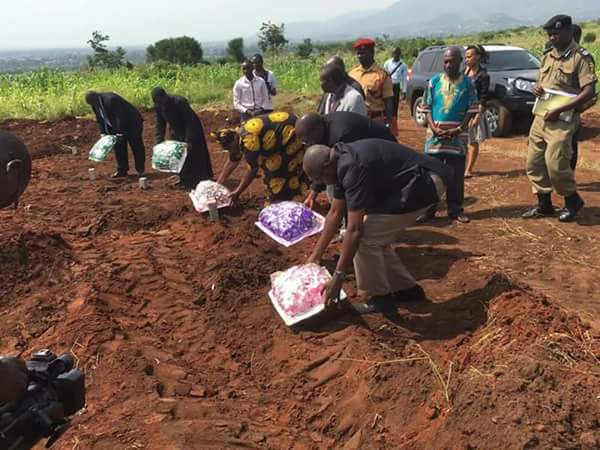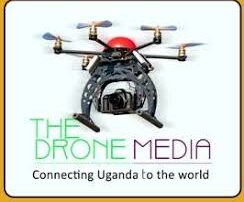Ankole started from Isingiro and Bukanga

If you read a book titled ‘A History of Ankole’ by Edward Mungonya, a District Commissioner for Ankole during the time of colonialists. You will appreciate that Ankole doesn’t need a kingdom.
Be informed that there were Banyankole before the kingdom came up in 1600’s.
The Ankole kingdom was founded by a retreating group of Bacwezi from Bunyoro. It was first known as Kaaro karungi kingdom with headquarters @ Bweyorere in Kyeirumba, Isingiro (15 miles from Mbarara). It initially covered Isingiro & Bukanga.
It later expanded to include Rwampara, Kashari, Nyabushozi & present day Mbarara town in 1700’s & acquired a new name Nkole
There were Banyankole living in all these places before the kingdom was created or expanded. The kingdom was just a political entity to rule the masses. There is no way a king can teach you your origin
After the death of Nkole’s greatest king ever, Omugabe Ntare V in 1895, succession battles over who should be the heir between kahaya & igumira raged & Nkole became too weak.
With the arrival of the British colonialists in 1901 (a year after signing the Buganda Agreement), they forced the Nkole royals led by Kahaya & prime minister Mbaguta to accept colonial rule on a condition that they would expand their kingdom to include other areas.
Other chiefdoms of Mpororo (Ntungamo), Igara (Bushenyi), Sheema (Sheema) and Buhweju (Buhweju, Ibanda & Kazo) were forced to be under Nkole and this was sealed by signing of the 1901 Ankole Agreement & the name changed from Nkole to Ankole.
The people of Igara & Buhweju resisted but were overpowered. The Igara chief committed suicide at Kashaka as he was being forcefully taken to Mbarara to sign the agreement.
In Buhweju chiefdom, the people murdered a British administrator Galt in broad day light at Ibanda in 1905 after fighting for 4 years. The British killed the Buhweju king & imposed forced labour on the people of Buhweju. A monument for Galt was put up as locals had to carry stones from as far as 50 kilometers to construct a Galt monument in Ibanda (it still exists).
Other people of Buhweju were forced to offer labour in Mbarara. Mbarara High School (set up in 1911), St James Church of Uganda, Ruharo, seat of Ankole diocese, were constructed using this forced labour. It is from the Runyankole version of forced labour ‘Oruharo’ that the place came to be known as Ruharo.
Its not a surprise that Ruharo is just a stone throw from Kamukuzi (seat of Ankole kingdom), Nkokonjeru (burial site for Abagabe/kings of Ankole) & Lake View in kiyanja (which used to be Omugabe’s lake/where he would bathe from)
On the other hand, discrimination became too much. The rulers of Nkole which had now expanded into Ankole mistreated the locals in former chiefdoms that had been forced to be under Ankole.
The internal revolts were mob & the British sent Baganda to act as chiefs. The Baganda were very loyal to the British & had been used as chiefs under Semei Kakungulu in Bugisu & had a lot of impact. That’s why the Bagisu even up to now count in Luganda e.g one (1) is emu in Luganda & Lugisu, two (2) is bbiri in both Luganda & lugisu etc
In Ankole, Kakungulu orchestrated a move & sent his Baganda Moslems to act as chiefs. They were given land in each former chiefdom. That’s why you find Baganda Moslems in isolated trading centers in each of the chiefdoms that was added onto Nkole ie Nyamunuka in Ntungamo (Mpororo), Bisheshe in Ibanda (Buhweju), Itendero (Sheema) & Ishaka in Bushenyi (Igara).
The attempt to add Kigezi onto Ankole was bloody as the war took some time & eventually resulted into migrations of the Bakiga (Kabale, Kanungu), Bafumbira (Kisoro) & Bahiima Bahororo (Rukungiri & some parts of Ntungamo like Kajara).
The Bahororo mainly migrated to Nyabushozi (present day Kiruhura) & Kabula/Ssembabule.
These migrations increased discriminations in Kiruhura, for instance, the Bahiima, whose grand fathers lived in Nyabushozi when the area was still Nkole (before 1901) consider themselves as the real Banyankole…. ‘Abahiima Babanyankole’ and are very loyal to the Ankole kingdom.
They refer to the other Bahiima who migrated as Abahororo or Abanyarujumbura & other Banyankole as Bairu. This discrimination exists up to now.
In elections in kiruhura, this tribal chauvinism is rampant, for instance, in their LC V elections, the Bahororo & Bairu supported Katugunda while those who call themselves Abahiima Ba Banya’nkole (the indigenous) supported Kamugungunu. Katugunda won. In 2011 also, the Bairu rallied behind their own Genensio Tumuramye for MP Nyabushozi against NRA veteran Col Fred Mwesigye of the Abahiima Babanyankole & it was bloody. Mwesigye won despite allegations of vote rigging & torture & harassment of Bairu by security. Nevertheless, Kashongi constituency (with just 2 sub counties), which is predominantly Bairu was curved out of Nyabushozi just before the 2016 elections & Genensio is now MP Kashongi while Mwesigye represents Nyabushozi.
Kazo which is predominantly Bahororo & Bairu & was initially part of Buhweju chiefdom alongside Ibanda & Buhweju districts, has been seriously demanding for its own district. Kazo district will commence in 2018.
CONCLUSION
Ankole kingdom was created by the British not the Banyankole. If its about restoration, it would be prudent to restore Nkole not Ankole and also restore other chiefdoms.
Restoration of Ankole will resurrect & even increase discrimination, segregation & tribal chauvinism.
If its about culture, even us, we shall demand for restoration of our Buhweju chiefdom. We the Abatiizi clan were the rulers of Buhweju chiefdom until after Galt was murdered in 1905 & were forced to be under Ankole.
No need for Ankole kingdom. Those who don’t know the history of Ankole & those whose grand parents got free land from the Ankole Kingdom are the ones calling for restoration of the kingdom.
